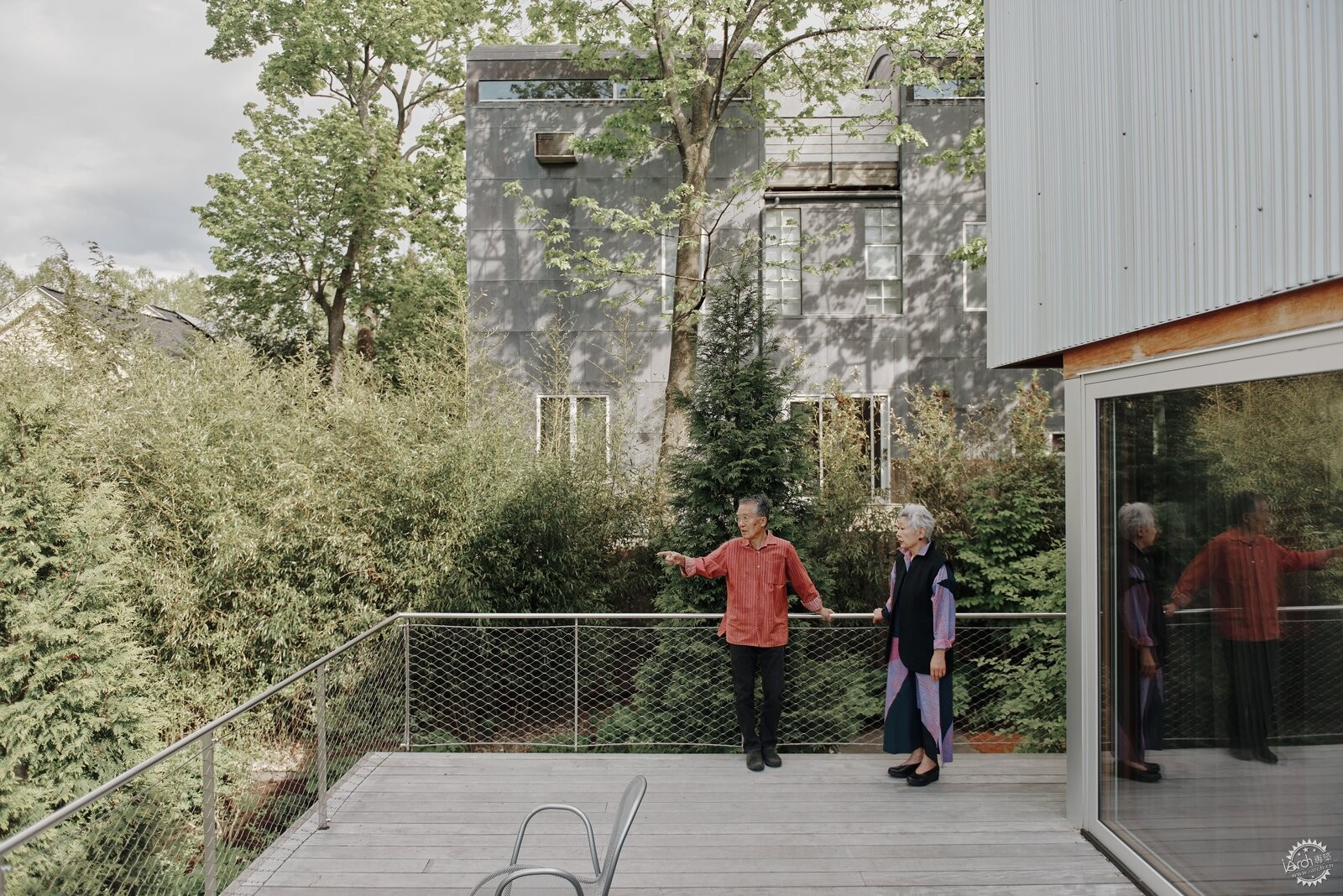
建筑师缩小的家关注室外环境和在地安养
An Architect’s Slim Home Emphasizes the Outdoors and Aging in Place
由专筑网清珂,小R编译
在波士顿绿树成荫的剑桥街上,矗立着众多殖民地风格和维多利亚风格的住宅,也有许多现代风格住宅,韩裔美籍建筑师禹圭升(Kyu Sung Woo)在此设计的新家就是其中一栋。
这不是禹圭升设计的唯一一栋建筑。上世纪80年代中期,他为母校哈佛大学设计的充满个性的学生宿舍,以及1989年为自己设计的大胆的后现代住宅也位于此。在原住宅住了15年后,禹圭升夫妇买下了旁边的地块,不过只是用了一块扩建花园,其余地方闲置了10年。
Architect Kyu Sung Woo’s new home is not the only contemporary dwelling on the leafy Cambridge street where Colonials mingle with Victorians. It’s not even the only one Kyu Sung designed.
There’s also the daring-for-its-time Harvard University faculty compound from the mid-1980s and the brazen, postmodern house the Seoul-born architect built for his family in 1989. Fifteen years after moving in, Kyu Sung and his wife, concert pianist Jung-Ja Kim, acquired the lot next door. They expanded their garden but otherwise left the property alone for 10 years, pondering what would come next.
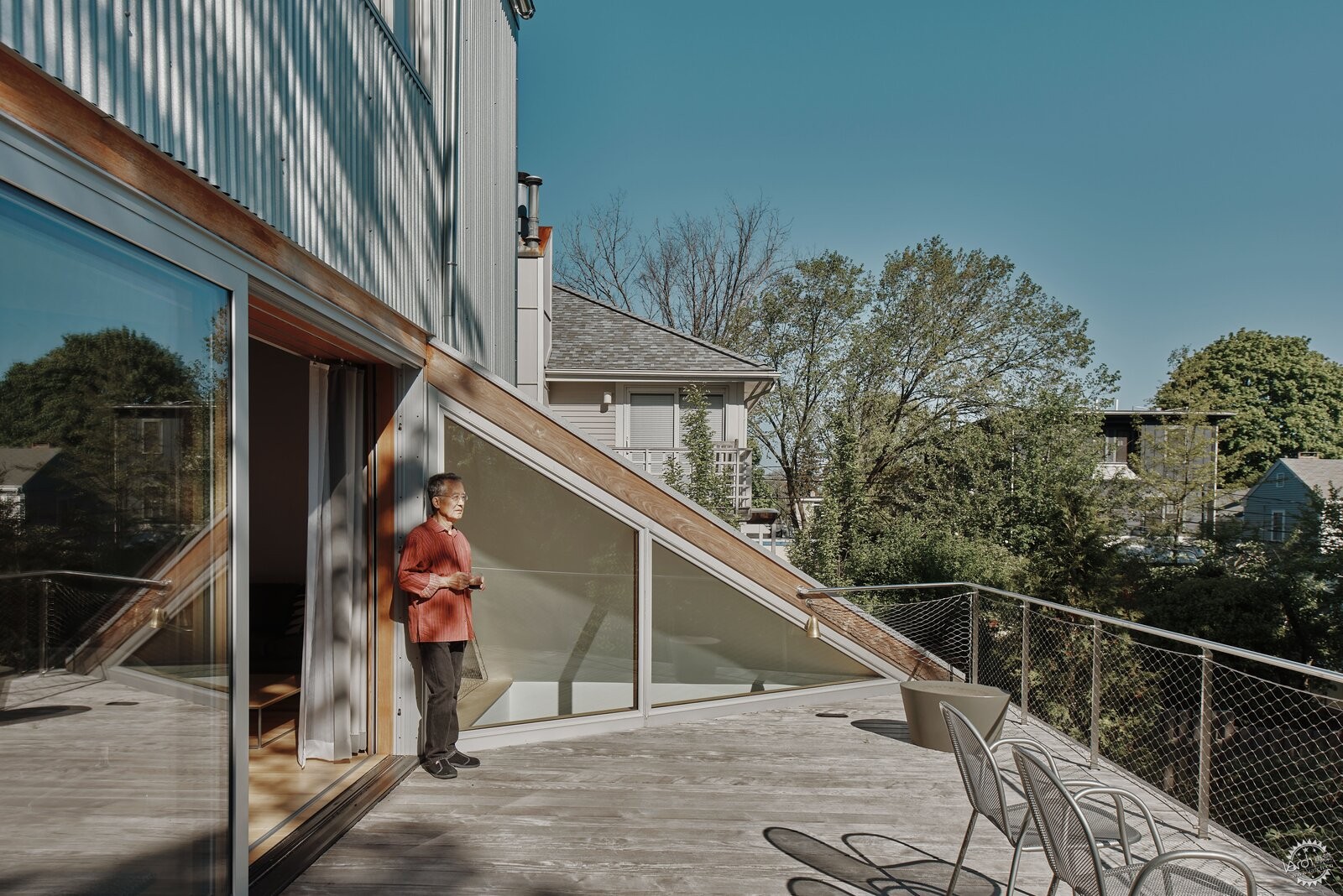
2014年,这对夫妇决定缩小住房规模,在闲置地块上建造一个小一些的新家。尽管两人都还健康活跃,而且都没有退休,但他们希望解决住房中的无障碍设施,例如安装了电梯。“这是一栋为老年人设计的房子”,这位今年80岁的建筑师说。
禹圭升把自己设计的原住宅和新住宅分别命名为房屋1号和房屋2号。
In 2014, the couple decided to downsize and create a new, smaller home on that lot just for themselves. And although both are highly mobile and neither is retired, they also wanted to address accessibility concerns, which they did by incorporating an elevator, for example. "This is a house for senior life," says the architect, who turned 80 this year.
The two modern structures that Kyu Sung designed, modeled here on both sides of the historic property, are named House I and House II, respectively.
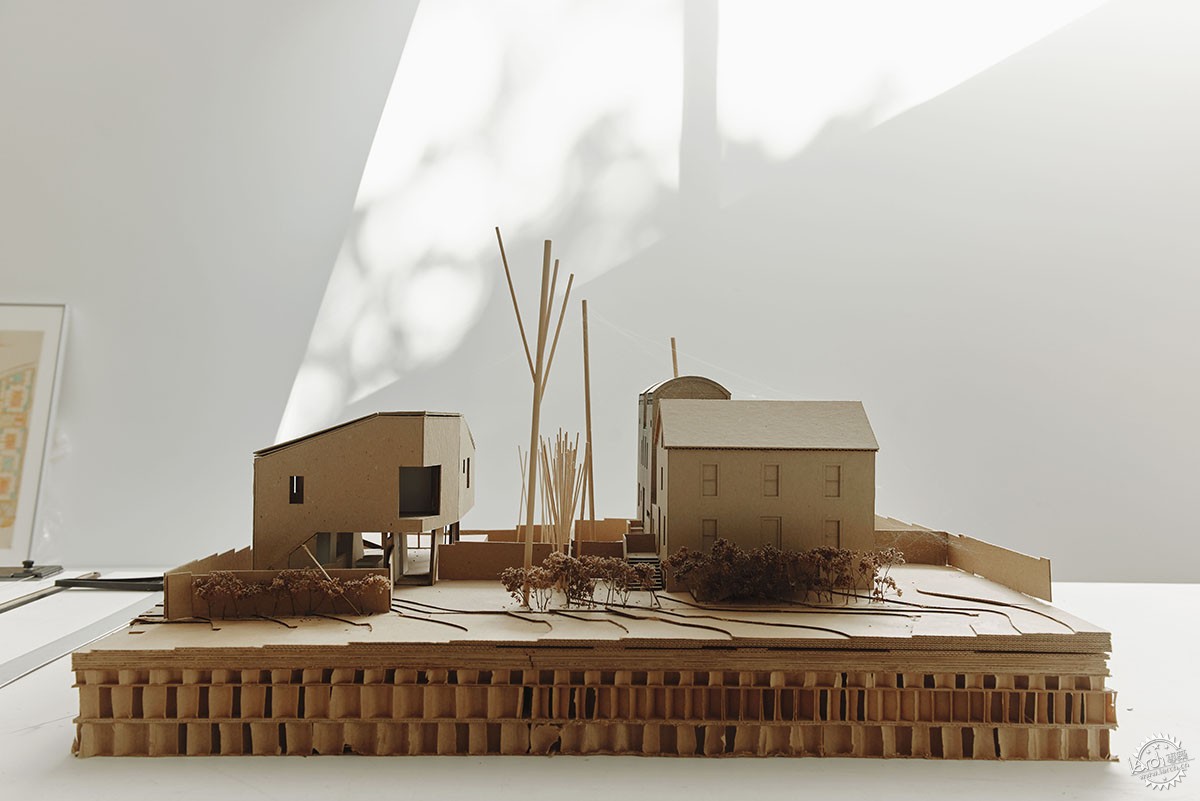
房屋2号共3687平方英尺(约343平米),于2019年完工。这栋房子外形纤巧,拥有全高玻璃幕墙,以及考虑到斜面地基的折角屋顶。房屋1号的设计灵感来自韩国四合院,它的设计是要退隐到界定好的内部空间,而新房子的设计则是要在灵活的内部以及与外部景观和城市之间建立联系。“从某种意义上说,第一栋房子是内向的,第二栋是外向的”,禹圭升说。
房子的二楼悬挑在入口上方,有一个大的角窗。“安装大窗户是为了可以朝外看,你可以看到街道、停车场,知道自己生活在一个城市里。随着年龄的增长,与外界的联系能力很重要。”
The 3,687-square-foot house, named House II and completed in 2019, has a slim profile, full-height glass walls, and an angular roof that references the sloping site. While the design of the first house, which was inspired by Korean courtyard homes, was about retreating to defined interior spaces, the design of the new one is about forging connections within a flexible interior as well as with the landscape and the city beyond it. "In a sense, House I was introverted and House II is extroverted," Kyu Sung says.
Cantilevered above the entrance, the home’s second floor features a large corner window. "I made the window big because I was thinking about looking out of it," he says. "You can see the streets and parking and know you’re living in a city. That ability to relate to the outside world is important as you age."
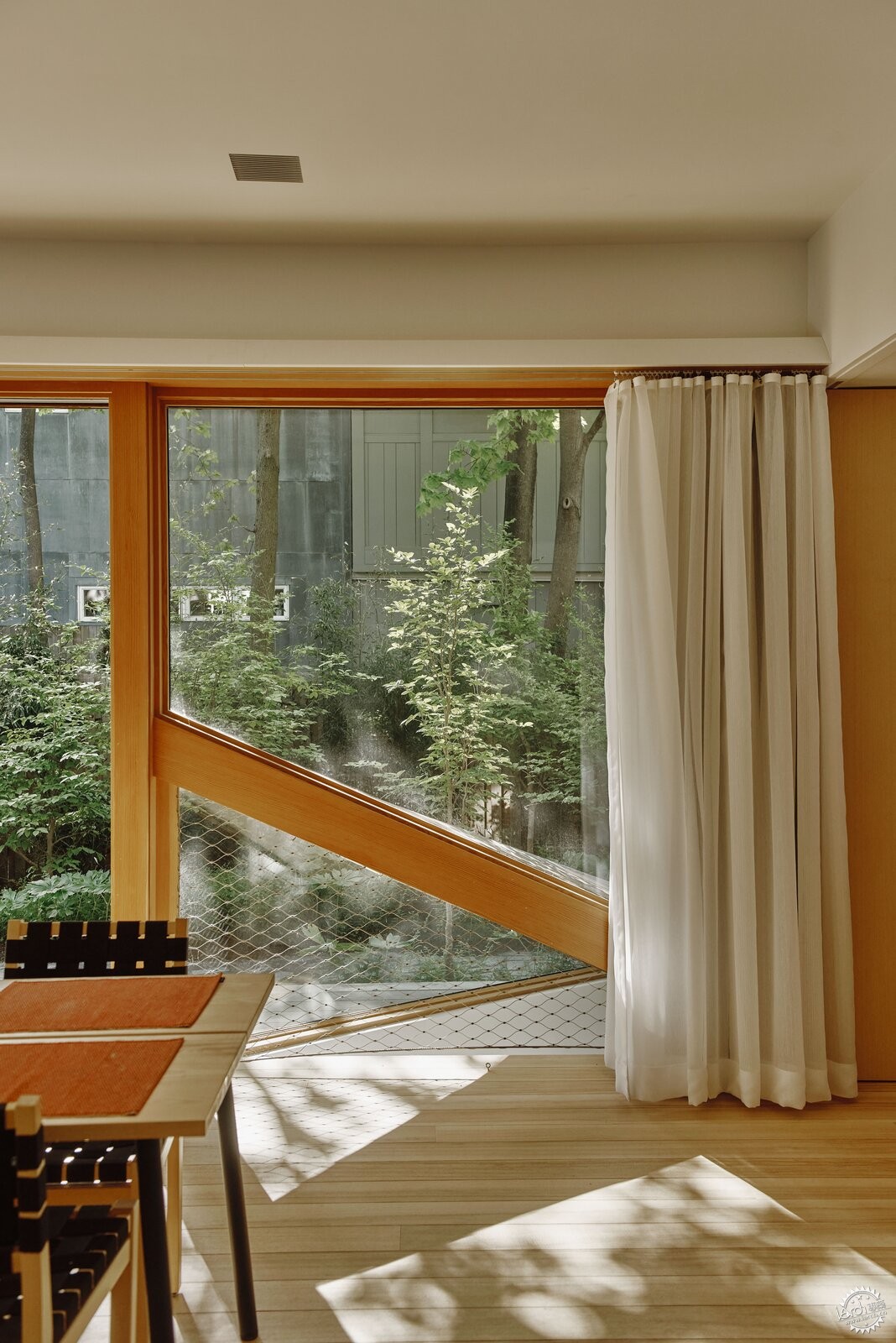
房子的一些关键特征传达出这位建筑师想要灵活连接的愿望。大的落地门可以滑动或转动打开,这样可以扩大或隔离空间。例如,一楼的生活区两端向平台开放,一个巨大的口袋式移门可以露出厨房。在二楼,两间套房卧室和练习室围绕楼梯、电梯和楼梯平台展开。
A few key features express Kyu Sung’s vision of flexible connectivity. Large floor-to-ceiling doors that slide or swing open allow the couple to expand spaces or close them off for separation. The first-floor living area, for instance, opens on two sides to the deck, and a giant pocket door can expose the kitchen. On the second floor, two en suite bedrooms and Jung-Ja’s practice room fan out around the staircase, elevator, and landing.
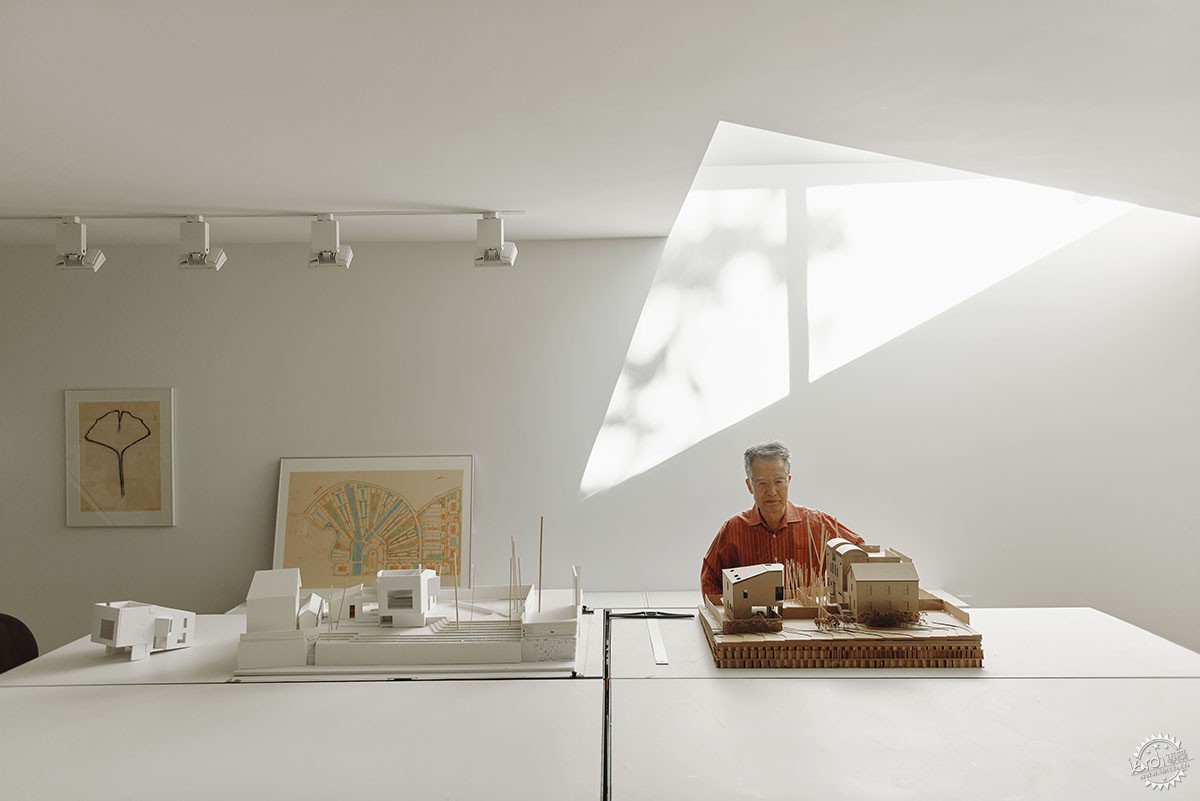
在地下一层,穿过建筑的三角形光井照亮了建筑师的工作室,并构成了另一种连接方式,“在房子里叫对方能听得见。”禹圭升说,之前的房子有5000多平方英尺(约465平方米),在房子里要找到对方都是一种挑战。
In the basement, triangular light wells that cut through the building brighten Kyu Sung’s studio and grant another type of connection: "It’s nice to be able to shout and hear each other," Kyu Sung says, noting it was a challenge to even find each other in the other house, which was more than 5,000 square feet. Still owned by the Woos, House I is currently being rented to a foundation.
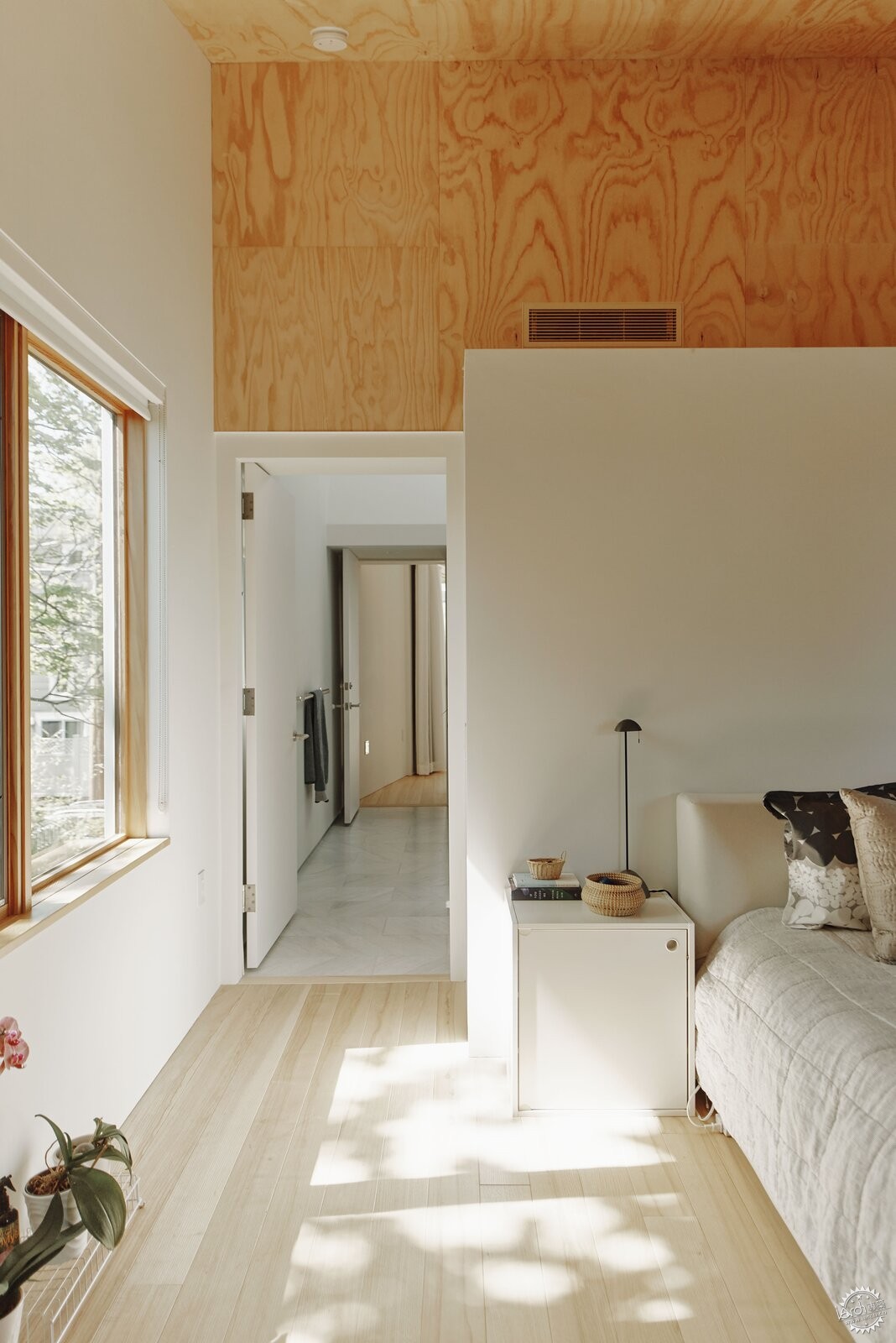
房屋2号虽然缩小了,但更有助于提升幸福感。白蜡木的地板、楼梯和墙板,加上玻璃框和坡面,在透过天窗的阳光照射下形成了一种像蚕茧一样被包裹的氛围,在这里会感觉很好,像是得到拥抱、支持、和抚慰。不过,建筑师也强调了和墙外连接的重要性,“我从母亲那里学到,年老时与外界的联系非常重要。当你年轻时,你有自己的家庭,而年老后需要与城市和自然多联系。”
House II’s pared-down aesthetic contributes to a sense of well-being. White ash floors, stairs, and wall panels, plus bands of glass and angled planes washed with sun from skylights, create a cocoon-like atmosphere. One feels good in this house—embraced, supported, soothed. However, when Kyu Sung speaks of the home, he emphasizes the benefits derived beyond its walls. "I learned from my mother that connecting to the outside world is very important in older age," he says. "When you’re younger, you have a family. Later you need to connect to the city and nature.”
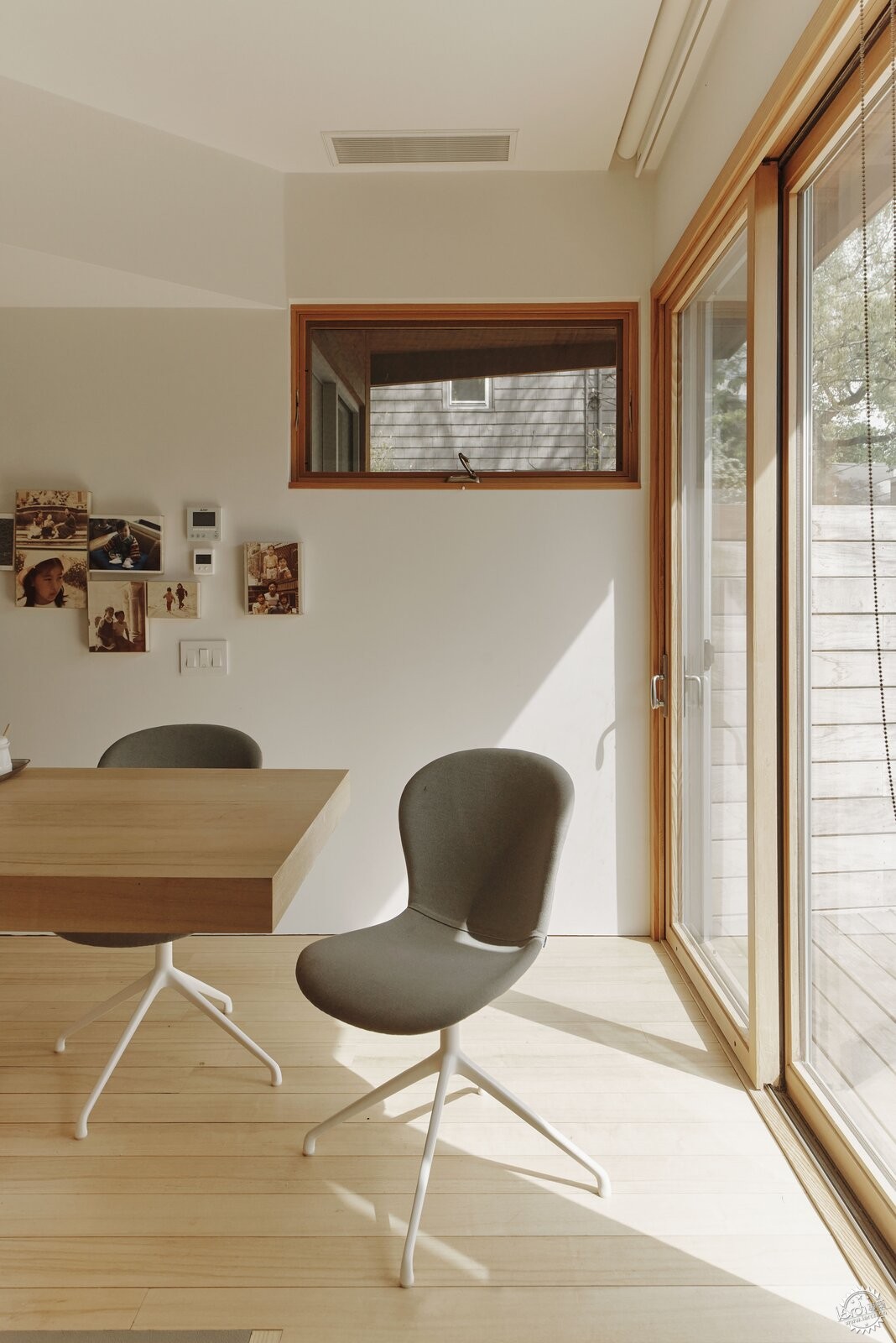
通过二楼的窗户可以看到临近街区和远处的城市,建筑师邀请他经常合作的朋友、景观设计师Michael Van Valkenburgh设计一个与自然相连的花园。两人合作了30年,曾经共同设计过房屋1号、获奖项目哈佛研究生公寓等。两人都表示,他们很了解对方的审美,这有助于工作,减少无效的沟通。
Valkenburgh设计的花园中,一条围绕着重蚁木铺成的休息平台的L形小路,沿着房子的东侧延伸,绕到房子的背面。建筑师将屋后休息平台看作“建筑与景观之间的中介”。2008年,他在佛蒙特州为家人设计一个休养地时,尝试了这一概念。身为钢琴家的夫人每天会在钢琴前坐数小时,这个花园也是为了鼓励她多进行短时间的散步。
While second-floor windows offer views of the neighborhood and the city beyond, Kyu Sung asked his friend and frequent collaborator, landscape architect Michael Van Valkenburgh, to design a garden for connecting with nature. The pair have been working together for 30 years on such projects as House I and the award-winning Harvard graduate housing complex at 10 Akron Street. Both cite their strong sense of the other’s aesthetics as facilitating a working relationship that requires minimal back-and-forth.
Van Valkenburgh designed a garden that is essentially a single path surrounding the L-shaped ipe deck that runs along the east side of the house and then wraps around the back. Kyu Sung thinks of the deck as "the mediator between the building and the landscape," a concept he explored when he designed a retreat in Vermont for his family in 2008. The garden is also meant to encourage short strolls, especially for Jung-Ja, who spends hours a day at the piano.
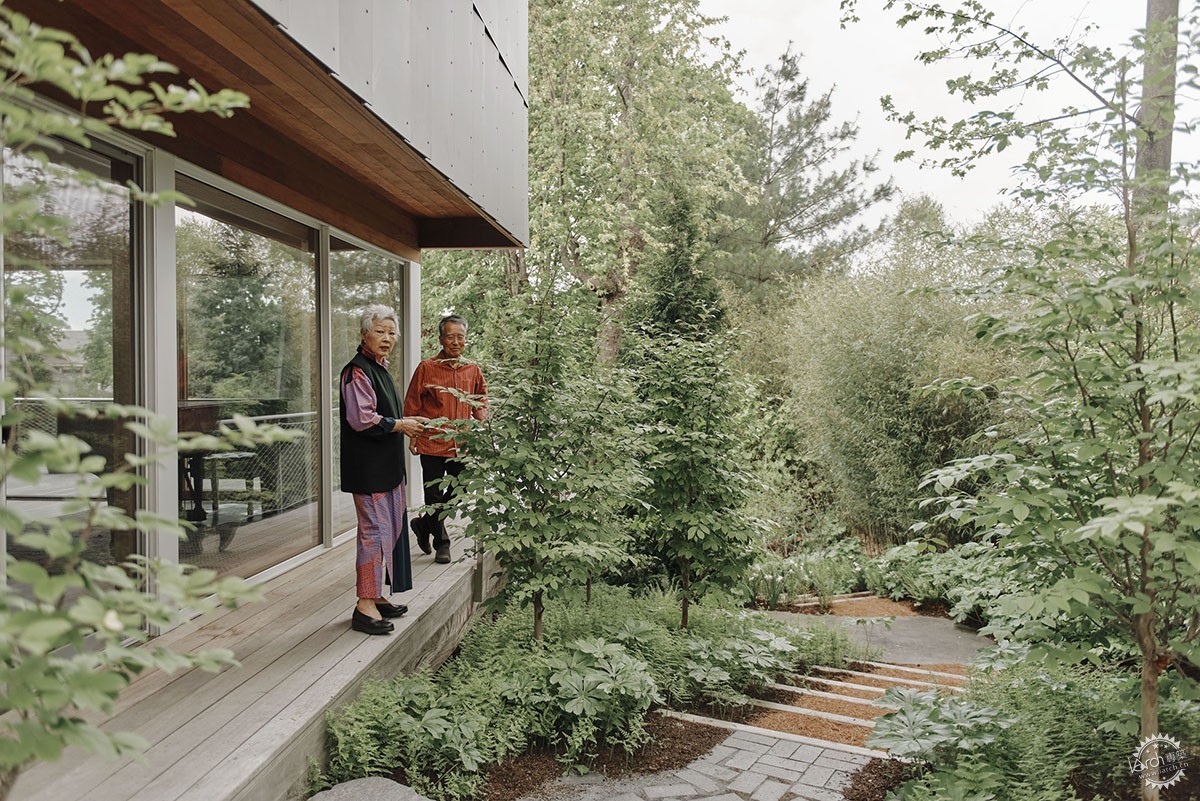
Valkenburgh没有用极简主义设计花园,而是设计了一系列复杂的不断变化的“情节”。超过60种植物会相继开花,每三个月就会出现新的颜色组合,“穿过花园的体验像是看电影”。
在L形花园中,铺着松针的缓坡台阶蜿蜒而行。六英尺高的木栅栏将花园与街道隔开,增加了荫蔽的感觉。Valkenburgh表示:“花园的设计理念与极简主义截然相反,这是一个复杂的过程,一系列的经验和变化,这些都是花园吸引人的地方。”
Rather than taking a minimalist approach, Van Valkenburgh devised a complex range of ever-changing episodes. More than 60 plant species bloom sequentially, revealing new color combinations every three months. "The experience of moving through the garden is cinematic," he says
Gently graded steps covered in pine needles wander through the home’s L-shaped garden, designed by landscape architect Michael Van Valkenburgh. A six-foot-tall wooden fence shields the garden from the street, adding to the feeling of refuge. "The idea behind the garden is the opposite of minimalism," says Van Valkenburgh. "It’s about complexity and a range of experiences and shifts. These are what make it absorbing."
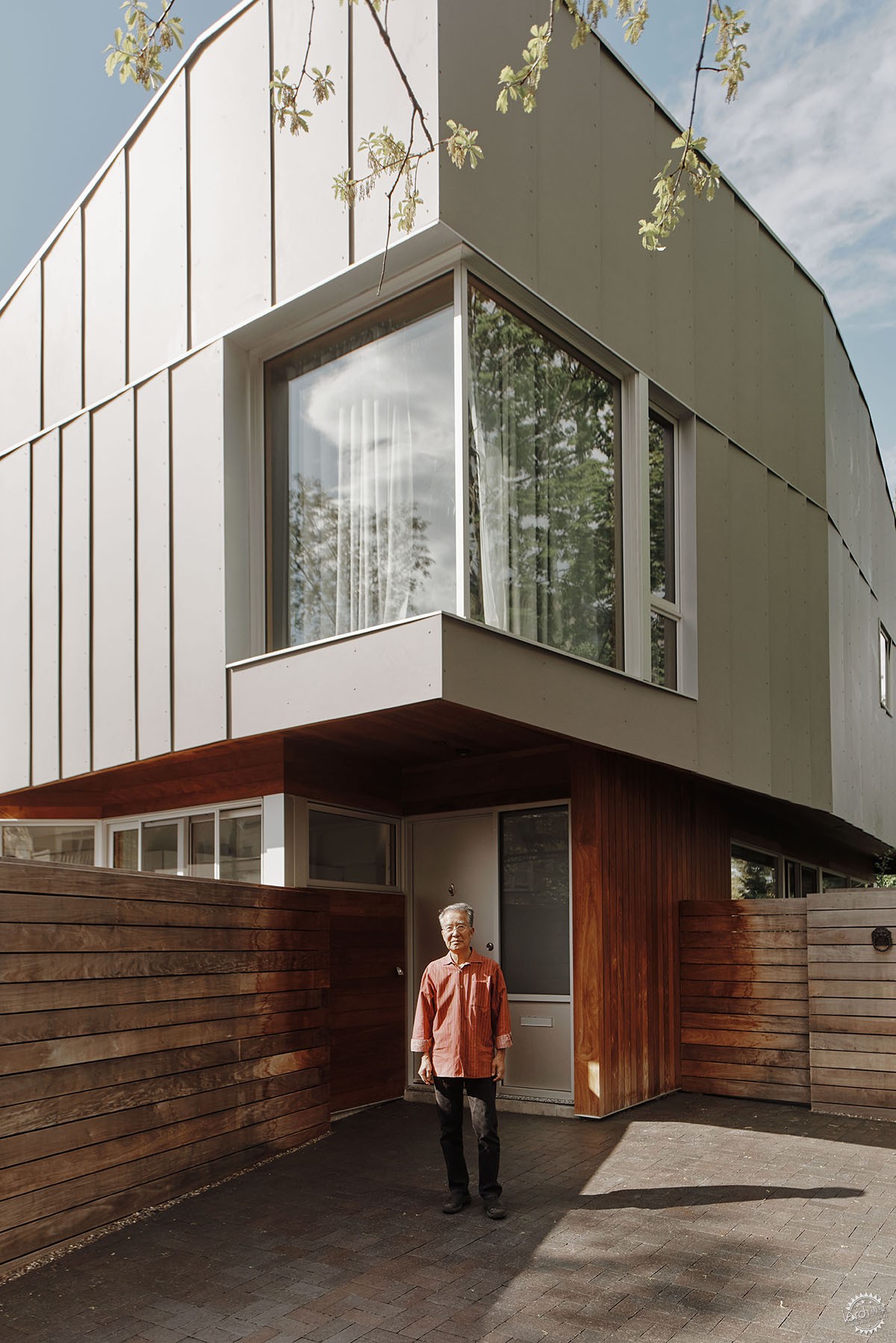
由于地面相互展开,地形和植物一样富于动态。在花园小径的起点,铺着紧密的砖块,很快变成分散的排列,坚硬的材料也变成了风化花岗岩。砖块在松针覆盖的六级台阶顶部再次聚集在一起,落在蕨类植物环绕的原始片岩板上。
“我喜欢开放式且生机勃勃的、未完成且未定型的景观。这可以让你有自己的发挥和改造余地。”
这对夫妇表示花园是房屋2号的精髓,建筑与景观的同步性大大增强了设计。建筑师说:“花园里不断变化的风景,繁茂的叶子和新开的花朵,为我们的日常生活提供了美丽的背景,使人焕发活力。”
The terrain feels as dynamic as the foliage, thanks to ground surfaces that unfold into each other. At the start of the path, tightly organized bricks soon dissolve into a scattered arrangement, the hard material transitioning to decomposed granite. The bricks come together again at the top of six steps blanketed in pine needles and land on a raw schist slab hugged by ferns.
"I like open-ended, lively landscapes that are incomplete and unresolved. They let you have your own reaction and interpretation."
—Michael Van Valkenburgh, landscape architect
The garden, the couple agree, is the essence of House II. The building’s synchronicity with the landscape exponentially enhances the design. "The changing scenery of the garden, with its lush leaves and new flowers, provides a backdrop for our daily lives," Kyu Sung says. "It is a reinvigorating experience."
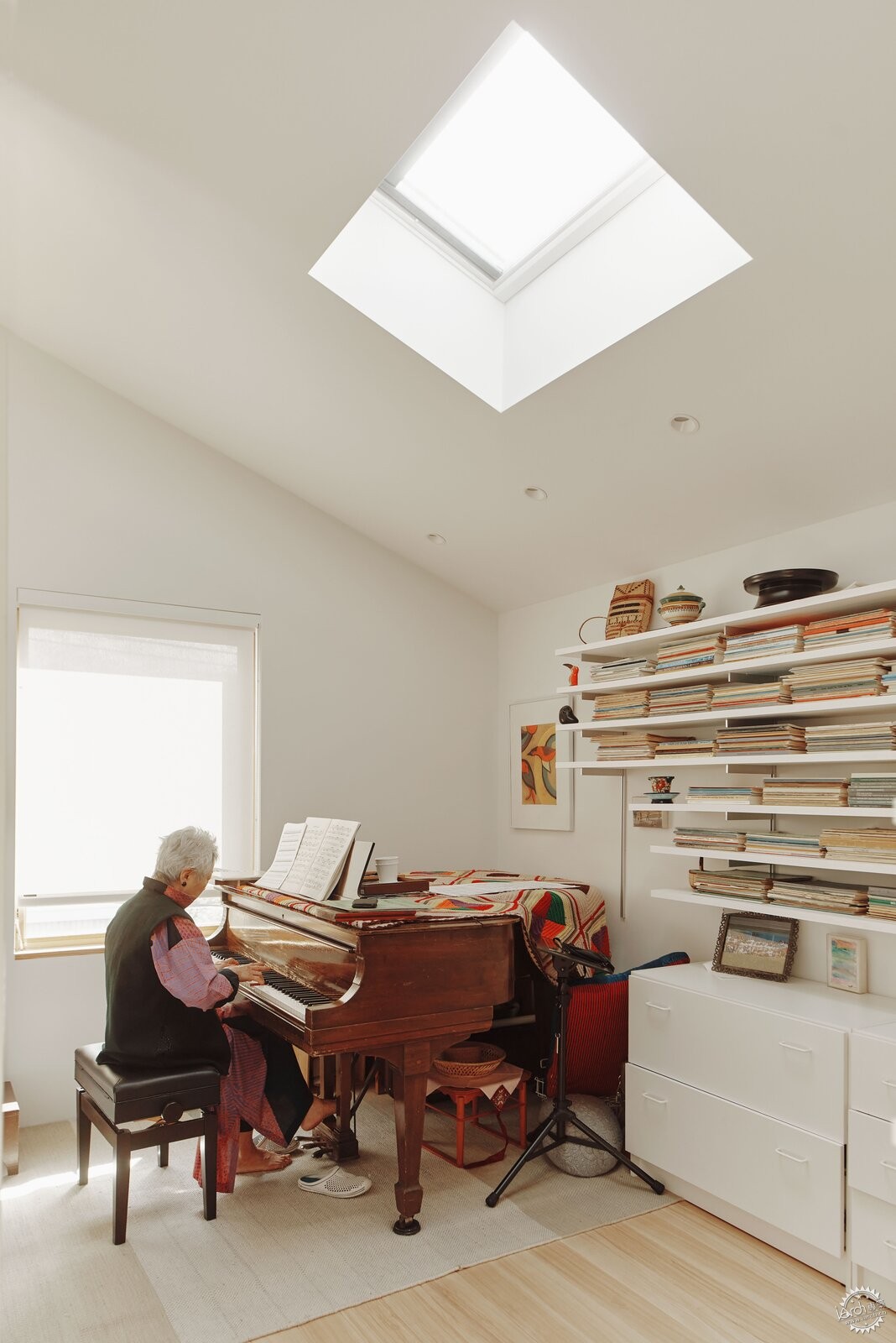
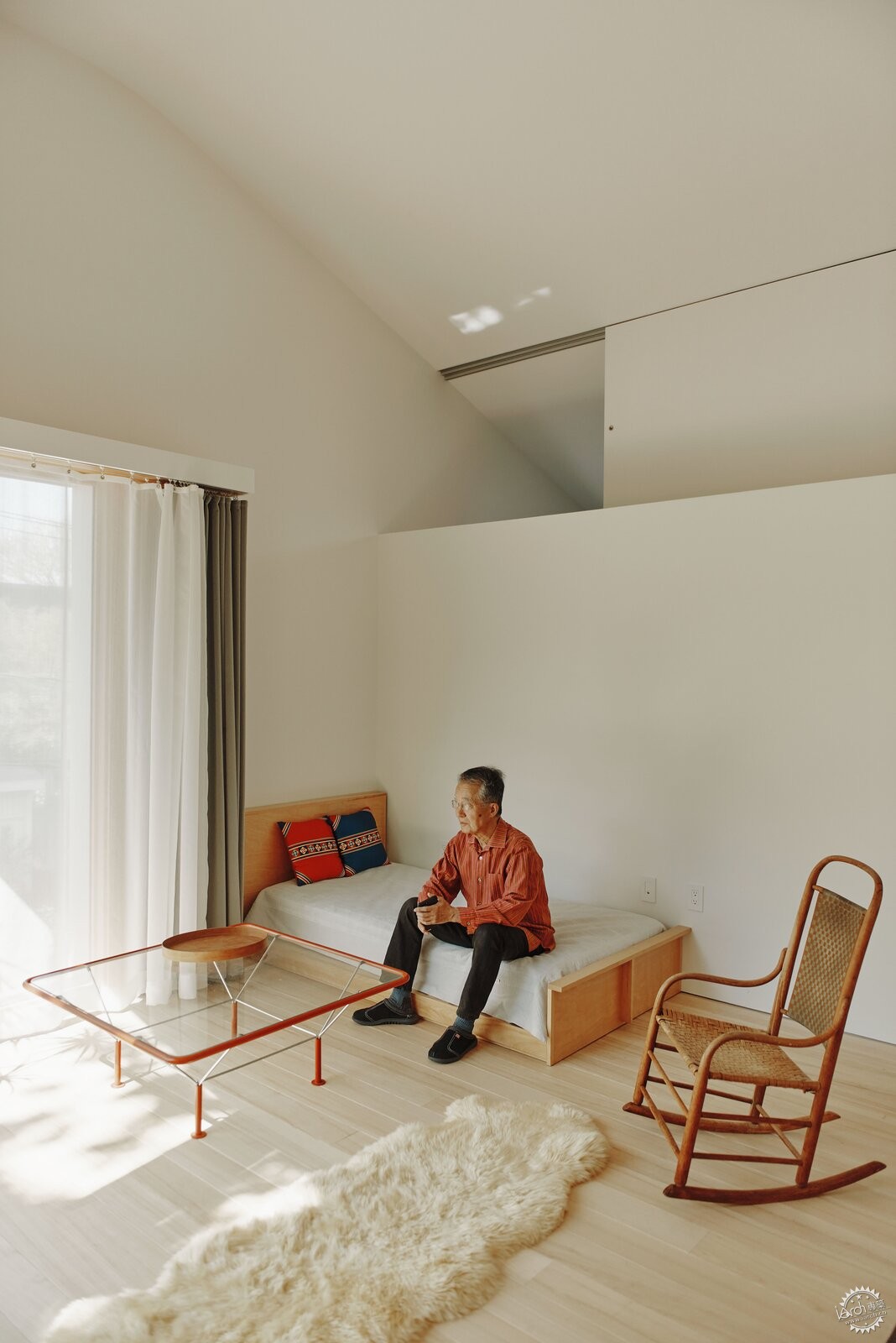
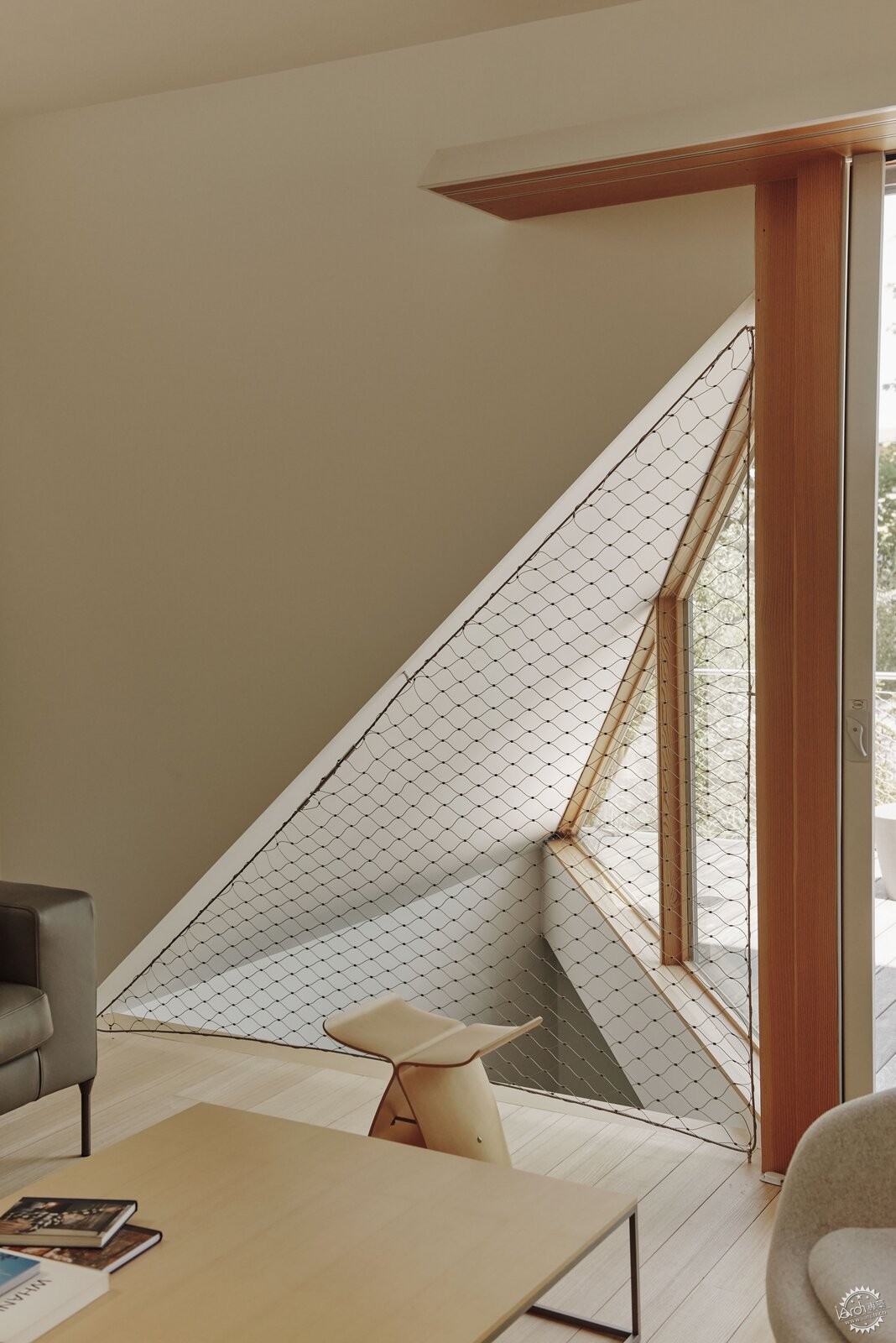
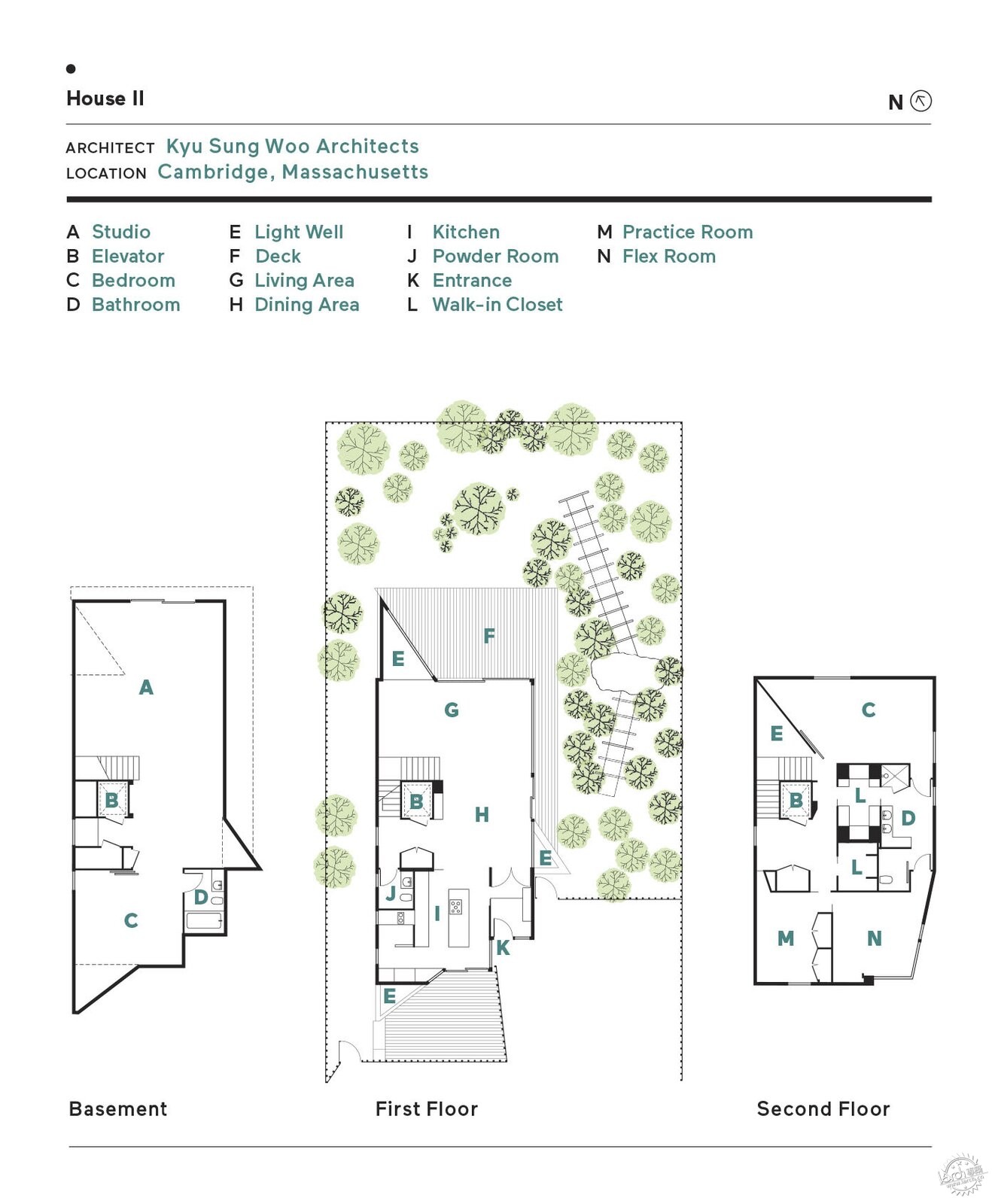
项目信息:
建筑设计:Kyu Sung Woo Architects
施工方:Stack + Co. / @stack.and.co
结构设计:RSE Associates
土木工程:Sherwood Consulting & Design
景观设计:Michael Van Valkenburgh Associates / @mvva.inc
照明设计:Nathalie Faubert
MEP设计:Sun Engineering
Project Credits:
Architecture: Kyu Sung Woo Architects
Construction: Stack + Co. / @stack.and.co
Structural Engineering: RSE Associates
Civil Engineering: Sherwood Consulting & Design
Landscape Design: Michael Van Valkenburgh Associates / @mvva.inc
Lighting Design: Nathalie Faubert
MEP Engineering: Sun Engineering
|
|
